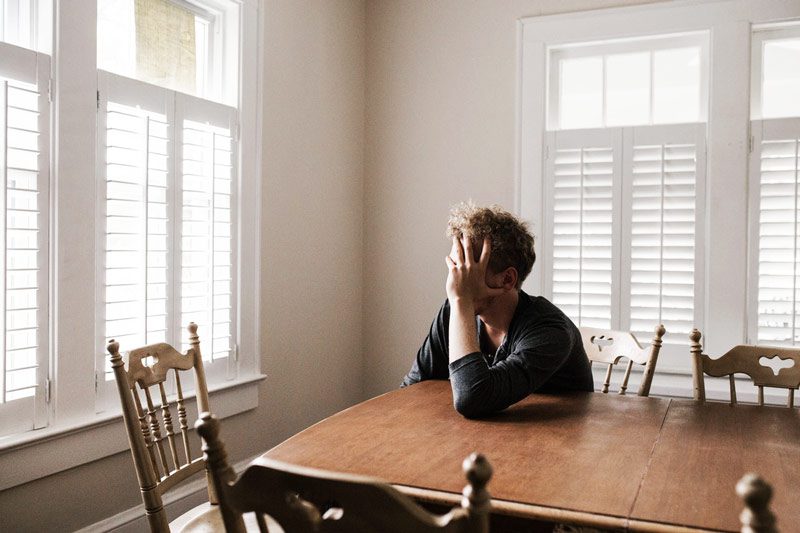Daylight Saving Time has wrapped up for 2020. On the one hand, many of us truly enjoy the extra hour of sleep we can grab on the night we turn our clocks back. But we also know that the switch to standard time means it will grow darker earlier in the evening—and that we are moving into the “dark” time of year, when sunlight is at a premium. Even with the holiday season’s attempts to spread good cheer, the winter months can be dreary.
Adjusting to the Change
Some people—perhaps including yourself—weather that dreariness just fine. Maybe they enjoy winter activities or just like the coziness of curling up with a blanket on a chilly fall evening. Maybe they can’t wait to build that first snowperson of the season or tap into the spirit of renewal that comes with the new year.
For others—perhaps including yourself—the shift from summer to fall, from Daylight Saving Time to Standard Time, and to shorter days and colder temperatures is a drag. Most of these individuals find this stretch of the calendar to be difficult but mostly manageable. They see winter blues as par for the course and nothing to worry about.
But some folks struggle significantly more during this time of year. For those with seasonal affective disorder—cleverly abbreviated as SAD—the winter blahs are more serious and can undermine day-to-day life. This is problematic in any case, but particularly so for a person in recovery. If you are struggling with SAD, you may well be in danger of a relapse.
Let’s take a closer look at seasonal affective disorder.
Spotting Seasonal Affective Disorder
How can you tell if you are experiencing seasonal affective disorder (or spot it in a family member or friend)? Among the most common indicators are:
- A significant reduction in energy that may lead to excessive sleeping
- Noticeable weight gain related to craving carbs and overeating
- More difficulty remaining focused on any given task
- An increase in feelings of hopelessness and/or anxiety
What leads to these symptoms? A number of interrelated factors are likely in play. Among them:
- Reduced levels of serotonin in the brain due to less exposure to sunlight
- A shortage of Vitamin D in the body that is also due to less exposure to the sun
- An increase in melatonin levels that leads to a reduction in energy and a desire for sleep
If you find yourself experiencing some or all of the symptoms we have noted, it is only natural to want to relieve those symptoms. For a person in recovery from a substance use disorder, SAD may trigger cravings for drugs or alcohol that you might hope will make you feel better. To defend your sobriety from this possibility, it is important to have some healthier strategies for addressing seasonal affective disorder.
Looking for the Light, and Other Approaches for Setting Aside SAD
You probably noted that a lack of sunlight is thought to be a key contributor to the development of seasonal affective disorder. Fortunately, there are a couple of ways to address this issue. The first is the more obvious of the two: you can simply bundle up and get outside. Getting some wintertime exercise—even if it is just a brisk walk for 10 or 15 minutes—is a good idea in any event and may well help address the symptoms of SAD. If you can’t (or won’t) get outside due to the cold, you should do what you can to welcome sunlight into your home or office by throwing open the curtains.
Acquiring a lightbox that simulates sunlight may be another excellent option. Sitting near a lightbox for up to an hour a day can help replace the sunlight you are missing due to the colder weather. Alternately, if your circumstances permit, spending part or all of the winter in warmer climes can keep SAD at bay.
Sunlight is an important source of Vitamin D, but there are other ways to acquire this essential nutrient that supports your mood. For example, your doctor may encourage you to take Vitamin D supplements during the winter months. It might be even better to increase the amount of Vitamin D you get from your diet. The vitamin can be found in pork, many kinds of fish, hard-boiled eggs, and mushrooms. It is also found in some fortified yogurts and cereals as well as in juices and milk—whether that milk is white or chocolate. Good nutrition in general is important to your mental and physical health and can help you overcome the symptoms of SAD.
Your doctor may also consider prescribing antidepressants or antianxiety medications. Of course, it is essential that you are honest with your doctor about your issues with drugs or alcohol so that they can make an informed decision about whether or not to recommend medication.
Another alternative is seeing a therapist who may be able to provide strategies for addressing the negative thought patterns that are characteristic of SAD. A strong set of coping mechanisms can be extremely helpful—especially in combination with some of the ideas listed above.
Don’t Let This Be the Winter of Your Discontent
At French Creek Recovery Center, we know that the shorter, colder days may sap your motivation to get help for your substance use disorder. But it is always the perfect season to regain your sobriety. We are prepared to offer compassionate, evidence-based care that addresses not only your issues with drugs or alcohol, but any co-occurring mental health disorders—like SAD—as well.

